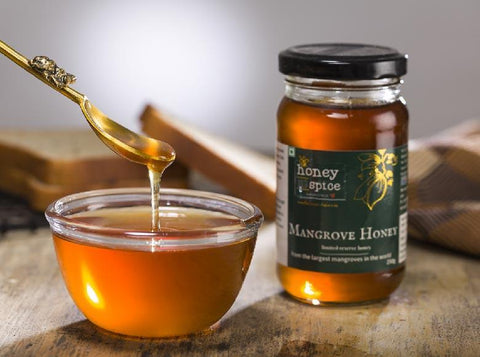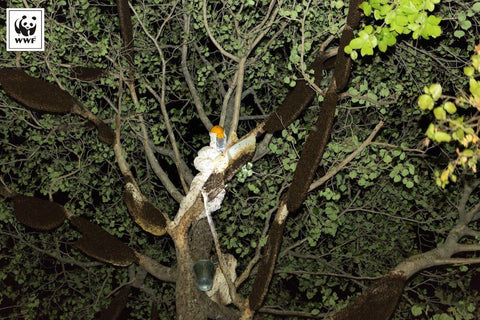Tribal communities have always relied on their surrounding environment for their survival and livelihood. One such story is of the tribal communities at Sunderbans.
The origin of the name, Sunderbans has two possibilities tied to it. One, the literal translation of the word means beautiful forest (Sundar meaning beautiful and Ban meaning forest) owing to its beauty. Other, it gets its name based on the Sundari trees found in the forest.
Honey collection is one of the livelihoods of the people of Sunderbans. The honey collectors are locally called the Moulis. The tribal tradition involves groups of men braving the mangroves from April to June, in search of honey. The honey collectors have to journey through ever-changing landscapes crafted by the high and low tides.
The roots of the mangroves are called pneumatophores which are up-facing conical root structures visible more so during the low tides. The Moulis have to step into deep muddy waters and find their way through a maze of spiky aerial roots. The men pray to Bonbibi, their forest deity seeking blessings and protection before heading into the forest.
The Sunderbans is a labyrinth of mangroves that is home to the mighty Bengal tiger, an endangered species along with housing crocodiles and other species. The Moulis traverse such an unsafe risk-laden path to find the notorious “BLOOD HONEY”. It is called Blood honey because of the numerous lives that are lost in man-tiger conflicts that occur while panning out for honey.
Today, the Moulis with the help of honey and spice, forest dept and other cooperatives have been able to set up apiaries making honey collection safer.
The apiaries are located at a distance from the residence of the tribals and along the edge of the forests, ensuring the purity of the honey along with the safety of the Moulis.
Bees are one of the most important pollinators spearheading the mission to ensure the longevity of wild ecosystems and nature. At the apiaries, honey is extracted carefully from the combs to ensure the survival of the bees and successful regeneration.
Mangrove honey
Mangrove Honey is raw, unprocessed, and encapsulates numerous nutrients beneficial for health. It differs from the usual honey texture as it is less viscous in comparison.
Every bottle of Mangrove Honey is an alchemy of the bees, brought to you by the Moulis. It holds sweet undertones of the mangrove forests with the colour range of a brown and gold palette owing to its rawness.
Only a few hundred kilograms of this honey is harvested every year and you can now order this from the comfort of your home - https://honeyandspice.in/collections/wild-forest-honey/products/mangrove-honey







